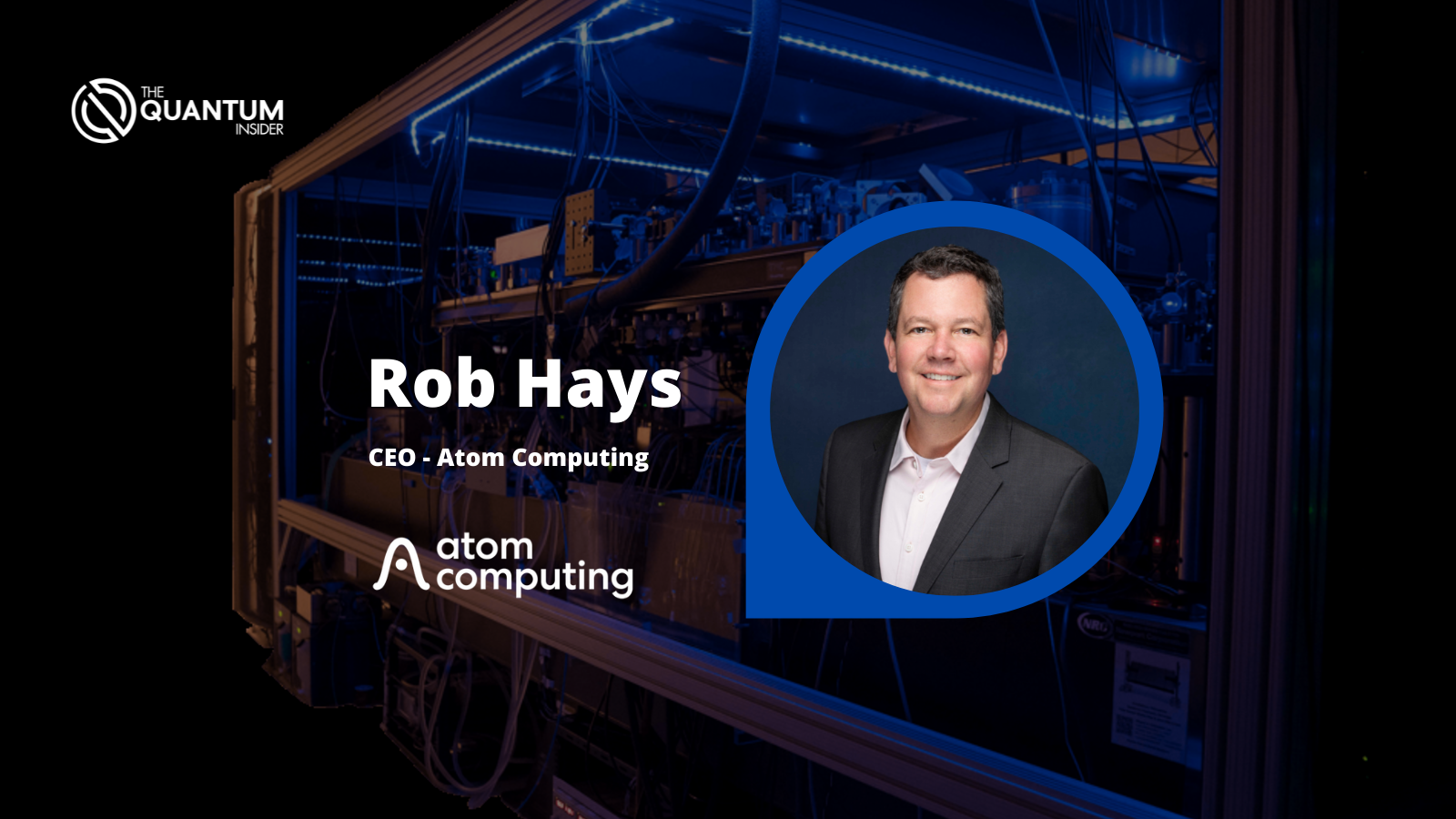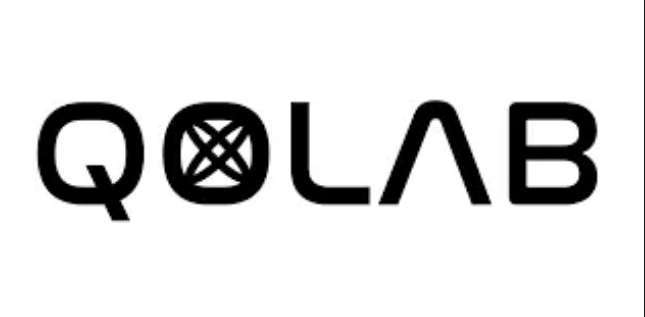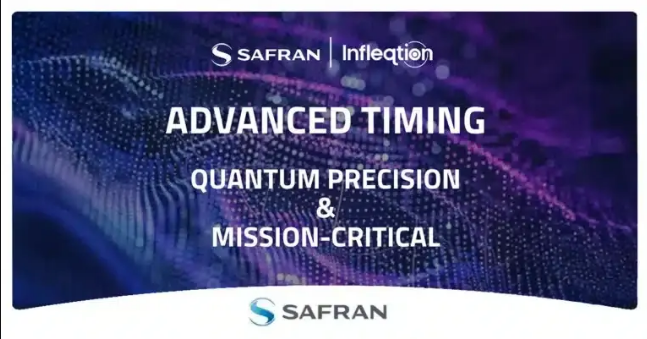 There’s nothing neutral about Atom Computing’s position on neutral atoms to providing the fastest path to quantum computers that can be used to solve practical problems.
There’s nothing neutral about Atom Computing’s position on neutral atoms to providing the fastest path to quantum computers that can be used to solve practical problems.
Rob Hays, CEO of Atom Computing, said that the potential for scalability may tip the scale toward a neutral atom-based approach compared to other modalities, such as superconductor and trapped ion modalities.
“Scalability is the main advantage of our approach. In the prior modalities, the qubits sit within manufactured chips that are cabled together into a system,” said Hays. “In the neutral atom approach, the qubits are packed tightly together in an incredibly tiny area of high vacuum and controlled wirelessly by lasers that are steered into the vacuum through microscope lenses. There is no need for large, cryogenic dilution refrigerators with our system; and with wireless control there is no need for the thousands and eventually millions of cables that some other modalities require. Lasers control the spin of the nucleus and the interaction between the electron clouds with different colors of light to get entanglement.”
“This allows for high quality gate interactions and greater scalability by avoiding a lot of physical limits to scalability” Hays added. “In fact, in the future, a million neutral atom qubits will fit in a space less than a cubic millimeter and be controlled by an electrical and optical system that fits in a few server racks.”

To visualize the process, imagine these atoms as small dots floating in a vacuum chamber. When you hit – or tweeze – the atoms with photons in a laser beam they literally freeze and become stuck to the focal point of light. By assembling a grid of laser beams, it creates an array of qubits that can be individually addressed by other colors of light to manipulate their quantum states and run circuits.
“In the vacuum chamber, there are millions of these atoms. We use Strontium, but it doesn’t have to be Strontium – floating around in the vacuum chamber and we basically trap a qubit for every point of light in there,” said Hays. “To scale up, we simply create more spots of light. We’re talking a very, very small space – on the order of microns.”
Neutral atom system does not require manufacturing chips and, because every atom is the same, defects – another engineering challenge in quantum – are not a concern.
Scalability Toward Quantum Advantage
Scalability as an engineering feat is not what is intrinsically important to Atom Computing, however. According to Hays, scalability will lead to less expensive quantum computing and a faster path to quantum advantage. That’s the ultimate goal for the company.
“At the end of the day, compute value always has and probably will continue to be workload performance per dollar,” said Hays. “The more scale you have, the more performance you get and the less expensive each incremental unit of performance is because of the economies of scale. In order to run large circuits, or deep circuits, in a quantum computer, you’re going to need a large-scale system. The larger the circuits, the more sophisticated the algorithms can be and the closer we will get to a quantum system outperforming a classical one.”
Hays added that it’s not exclusively about scale, though. Atom Computing is also interested in creating systems that are error-free. That requires system reliability, high-fidelity gates, long coherence times, mid-circuit measurement, and error correction schemes to produce so-called logical qubits and eventually fault-tolerant systems.
In addition to a treadmill of engineering advancements to improve the quality of their systems, Atom Computing’s scientists are researching ways to increase the precision of the lasers and minimize environmental interference from heat or even cosmic rays to continuously reduce error-rates and improve performance.
Taking Quantum Computers to Market
The company recently announced a $60 million Series B round and is using that investment to continue hiring top scientists and engineers to develop their second generation of quantum computers and bring them to market as a cloud service.
“A year ago, the team was almost all PhD-level physicists and a few electrical engineers and software engineers,” said Hays, “People with deep expertise in optics, quantum physics, RF control systems, and software development. Since then, we have been continuing to grow out the team of physicists but we’re also focusing on recruiting software developers, quantum applications experts, and senior business leaders with quantum experience – which is a scarce combination as you can imagine”.
Hays expects that the team in general will continue to grow and evolve, balancing the physics, engineering and business aspects of the company. And, while Atom Computing’s lasers are focused on neutral atoms, Atom Computing is laser-focused on taking its products to market and building the necessary partnerships and collaborations to make that happen.
“It really does take a village and, obviously, quantum computing is a very technically challenging field of deep technical innovation,” said Hays. “It’s going to take time to get these systems to the scale and quality for mass adoption. It’s a long game and it’s going to take a lot of collaboration at different levels of the solution stack.”
Hays, who has a long track record in the tech field, serving in executive roles at Intel and Lenovo, said that heading up a startup – and especially leading a startup in the quantum industry – has been both a unique and deep learning experience.
“When you’re learning, you’re mentally engaged and you’re energized,” said Hays. “It’s very different than working at a larger company where you’re on a quarterly cadence and there’s just a very cyclical, repetitive aspect of working as an executive in a big established company. At Atom Computing, it’s all new every day and we’re building, building, building… It’s energizing building the team and the technology. It’s fun uncovering new discoveries. Even though we have a roadmap, and we know where we are going, we’re working hard to knock down barriers every day as a company, and that’s one of the most rewarding parts of leading this team.”
For more market insights, check out our latest quantum computing news here.


















